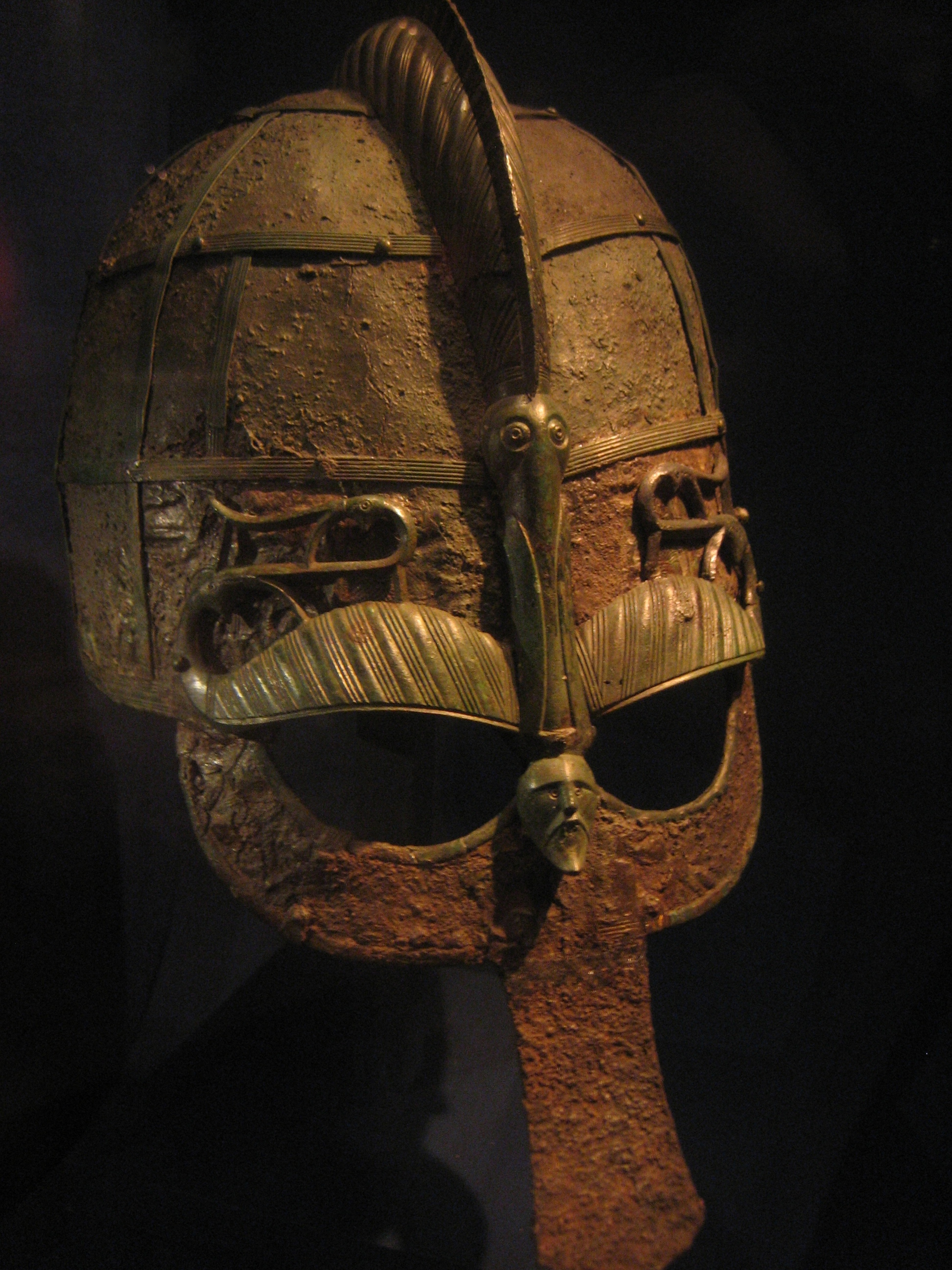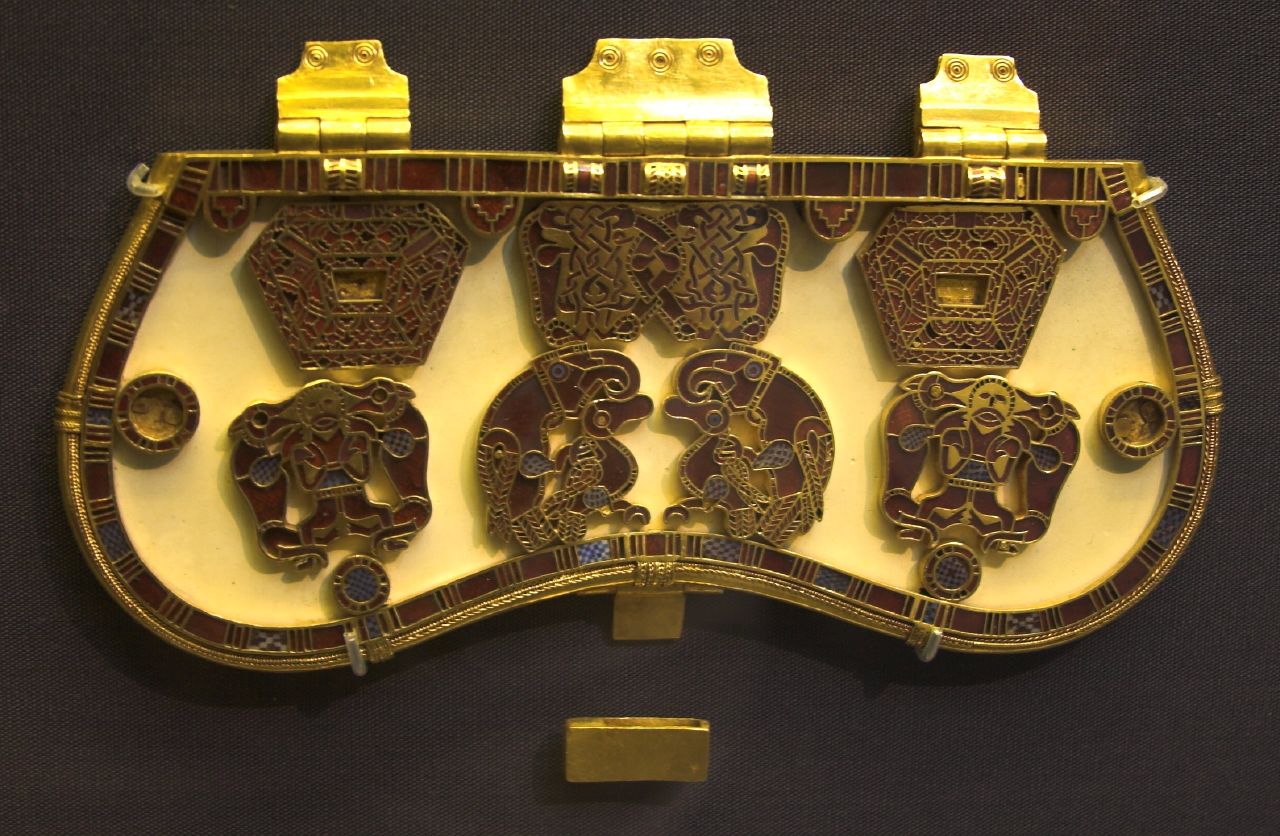|
Master Of Animals
The Master of Animals, Lord of Animals, or Mistress of the Animals is a motif in ancient art showing a human between and grasping two confronted animals. The motif is very widespread in the art of the Ancient Near East and Egypt. The figure may be female or male, it may be a column or a symbol, the animals may be realistic or fantastical, and the human figure may have animal elements such as horns, an animal upper body, an animal lower body, legs, or cloven feet. Although what the motif represented to the cultures that created the works probably varies greatly, unless shown with specific divine attributes, when male the figure is typically described as a hero by interpreters. The motif is so widespread and visually effective that many depictions probably were conceived as decoration with only a vague meaning attached to them. The Master of Animals is the "favorite motif of Achaemenian official seals", but the figures in these cases should be understood as the king. The human ... [...More Info...] [...Related Items...] OR: [Wikipedia] [Google] [Baidu] |
Valsgärde
Valsgärde or Vallsgärde is a farm on the Fyris river, about three kilometres north of Gamla Uppsala, the ancient centre of the Swedish kings and of the pagan faith in Sweden. The present farm dates from the 16th century. The farm's notability derives from the presence of a burial site from the Swedish Vendel Age (part of the Iron Age (c. 550–793) and the Viking Age); it was used for more than 300 years. The first ship burial is from the 6th century and the last graves are from the 11th century. Excavation The site was found and excavated by archaeologists in the 1920s, and before this similar graves had only been found at Vendel, which gave its name to this period of the Scandinavian Iron Age. The graves are princely, and are almost identical to ones found in England, at Sutton Hoo in East Anglia dated probably to 610-635. There are several theories about the identities of those buried, ranging from the Ynglings (Scylfings) to powerful warriors within the Leidang system, ... [...More Info...] [...Related Items...] OR: [Wikipedia] [Google] [Baidu] |
Vendel
Vendel is a village at Tierp Municipality in Uppland, Sweden. The village overlooks Vendelsjön, a long inland stretch of water near the Vendel river which has its confluence with the river Fyris. Vendel was the site of an ancient royal estate, part of ''Uppsala öd'', a network of royal estates meant to provide income for the medieval Swedish kings. A large number of archaeological finds have been found here, which have given their name to the Vendel Period. Vendel Church (''Vendels kyrka'') was probably begun to be built in Romanesque style during the latter half of the 13th century. Around 1450, the church was vaulted with brick vaults. The church is most noted for its murals by Johannes Iwan who worked in Uppland during the 15th century. Archaeological research In 1881 to 1883, several excavations by Swedish archaeologist Hjalmar Stolpe (1841–1905) revealed 14 graves in and just beyond the south-east corner of the churchyard. Several of the burials were contained in ... [...More Info...] [...Related Items...] OR: [Wikipedia] [Google] [Baidu] |
Torslunda Plates
The Torslunda plates are four cast bronze dies found in the Torslunda parish on the Swedish island Öland. They display figures in relief, representing what are presumed to be traditional scenes from Germanic mythology. The plates are moulds designed for production rather than display; by placing thin sheets of foil against the scenes and hammering or otherwise applying pressure from the back, identical images could be quickly mass-produced. The resulting ''pressblech'' foils would be used to decorate rich helmets of the sort found at Vendel, Valsgärde, and Sutton Hoo. Two of the plates may have been made as casts of existing ''pressblech'' foils. Discovery The plates were discovered in a cairn in early 1870, and are in the collection of the Statens Historiska Museum. Their fame derives from containing full scenes from mythology, unlike the fragmentary and degraded scraps of ''pressblech'' foils that are known. The plates have been exhibited internationally, including from ... [...More Info...] [...Related Items...] OR: [Wikipedia] [Google] [Baidu] |
Anglo-Saxon Art
Anglo-Saxon art covers art produced within the Anglo-Saxon period of English history, beginning with the Migration period style that the Anglo-Saxons brought with them from the continent in the 5th century, and ending in 1066 with the Norman Conquest of England, whose sophisticated art was influential in much of northern Europe. The two periods of outstanding achievement were the 7th and 8th centuries, with the metalwork and jewellery from Sutton Hoo and a series of magnificent illuminated manuscripts, and the final period after about 950, when there was a revival of English culture after the end of the Viking invasions. By the time of the Conquest the move to the Romanesque style is nearly complete. The important artistic centres, in so far as these can be established, were concentrated in the extremities of England, in Northumbria, especially in the early period, and Wessex and Kent near the south coast. Anglo-Saxon art survives mostly in illuminated manuscripts, Anglo-S ... [...More Info...] [...Related Items...] OR: [Wikipedia] [Google] [Baidu] |
Sutton Hoo Purse-lid
The Sutton Hoo purse-lid is one of the major objects excavated from the Anglo-Saxon royal burial-ground at Sutton Hoo in Suffolk, England. The site contains a collection of burial mounds, of which much the most significant is the undisturbed ship burial in Mound 1 containing very rich grave goods including the purse-lid. The person buried in Mound 1 is usually thought to have been Rædwald, King of East Anglia, who died around 624. The purse-lid is considered to be "one of the most remarkable creations of the early medieval period." About seven and a half inches long, it is decorated with beautiful ornament in gold and garnet cloisonné enamel, and was undoubtedly a symbol of great wealth and status. In 2017 the purse-lid was on display at the British Museum. Background The Roman legions withdrew from Britain in about 410 CE, by which time there is already evidence that groups of Germanic people were living alongside the native Romano-British population, probably as auxil ... [...More Info...] [...Related Items...] OR: [Wikipedia] [Google] [Baidu] |
Daniel (biblical Figure)
Daniel (Biblical Aramaic, Aramaic and he, דָּנִיֵּאל, translit=Dānīyyēʾl, lit=God is my Judge; gr, Δανιήλ, translit=Daniḗl, translit-std=ALA-LC; ) is the main character of the Book of Daniel. According to the Hebrew Bible, Daniel was a Nobility, noble Jews, Jewish youth of Jerusalem taken into captivity by Nebuchadnezzar II of Babylon, serving the king and his successors with loyalty and ability until the time of the Persians, Persian conqueror Cyrus the Great, Cyrus, all the while remaining true to the God of Israel. The consensus of most modern scholars is that Daniel is not a historical figure and that the book is a Roman à clef, cryptic allusion to the reign of the 2nd century BCE Diadochi, Hellenistic king Antiochus IV Epiphanes. Six cities claim the Tomb of Daniel, the most famous being that in Susa, in southern Iran, at a site known as Tomb of Daniel, Shush-e Daniyal. He is not a prophet in Judaism, but the rabbis reckoned him to be the most disti ... [...More Info...] [...Related Items...] OR: [Wikipedia] [Google] [Baidu] |
Early Middle Ages
The Early Middle Ages (or early medieval period), sometimes controversially referred to as the Dark Ages, is typically regarded by historians as lasting from the late 5th or early 6th century to the 10th century. They marked the start of the Middle Ages of European history, following the decline of the Western Roman Empire, and preceding the High Middle Ages ( 11th to 13th centuries). The alternative term ''late antiquity'', for the early part of the period, emphasizes elements of continuity with the Roman Empire, while ''Early Middle Ages'' is used to emphasize developments characteristic of the earlier medieval period. The period saw a continuation of trends evident since late classical antiquity, including population decline, especially in urban centres, a decline of trade, a small rise in average temperatures in the North Atlantic region and increased migration. In the 19th century the Early Middle Ages were often labelled the ''Dark Ages'', a characterization based on t ... [...More Info...] [...Related Items...] OR: [Wikipedia] [Google] [Baidu] |
Thrace
Thrace (; el, Θράκη, Thráki; bg, Тракия, Trakiya; tr, Trakya) or Thrake is a geographical and historical region in Southeast Europe, now split among Bulgaria, Greece, and Turkey, which is bounded by the Balkan Mountains to the north, the Aegean Sea to the south, and the Black Sea to the east. It comprises southeastern Bulgaria (Northern Thrace), northeastern Greece (Western Thrace), and the European part of Turkey ( East Thrace). The region's boundaries are based on that of the Roman Province of Thrace; the lands inhabited by the ancient Thracians extended in the north to modern-day Northern Bulgaria and Romania and to the west into the region of Macedonia. Etymology The word ''Thrace'' was first used by the Greeks when referring to the Thracian tribes, from ancient Greek Thrake (Θρᾴκη), descending from ''Thrāix'' (Θρᾷξ). It referred originally to the Thracians, an ancient people inhabiting Southeast Europe. The name ''Europe'' first referred to ... [...More Info...] [...Related Items...] OR: [Wikipedia] [Google] [Baidu] |
Denmark
) , song = ( en, "King Christian stood by the lofty mast") , song_type = National and royal anthem , image_map = EU-Denmark.svg , map_caption = , subdivision_type = Sovereign state , subdivision_name = Danish Realm, Kingdom of Denmark , established_title = History of Denmark#Middle ages, Consolidation , established_date = 8th century , established_title2 = Christianization , established_date2 = 965 , established_title3 = , established_date3 = 5 June 1849 , established_title4 = Faroese home rule , established_date4 = 24 March 1948 , established_title5 = European Economic Community, EEC 1973 enlargement of the European Communities, accession , established_date5 = 1 January 1973 , established_title6 = Greenlandic home rule , established_date6 = 1 May 1979 , official_languages = Danish language, Danish , languages_type = Regional languages , languages_sub = yes , languages = German language, GermanGerman is recognised as a protected minority language in t ... [...More Info...] [...Related Items...] OR: [Wikipedia] [Google] [Baidu] |
Torc
A torc, also spelled torq or torque, is a large rigid or stiff neck ring in metal, made either as a single piece or from strands twisted together. The great majority are open at the front, although some had hook and ring closures and a few had mortice and tenon locking catches to close them. Many seem designed for near-permanent wear and would have been difficult to remove. Torcs are found in the Scythian, Illyrian, Thracian, Celtic, and other cultures of the European Iron Age from around the 8th century BC to the 3rd century AD. For the Iron Age Celts, the gold torc seems to have been a key object. It identifies the wearer as a person of high rank, and many of the finest works of ancient Celtic art are torcs. The Celtic torc disappears in the Migration Period, but during the Viking Age torc-style metal necklaces, now mainly in silver, came back into fashion. Torc styles of neck-ring are found as part of the jewellery styles of various other cultures and periods. Te ... [...More Info...] [...Related Items...] OR: [Wikipedia] [Google] [Baidu] |
_(8704963755).jpg)







